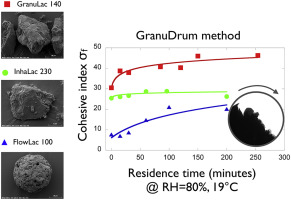- Home
- Blog
- News
- Basics
- Sources
- Agencies, Regulatory & Organisations
- CERSI Excipients Browser
- Excipient Report
- Excipient DMF List
- EXCiPACT Certified Companies
- Excipient Documentation
- Excipient EINECS Numbers
- Excipient E-Numbers
- FDA Inactive Ingredient List
- FDA GRAS Substances (SCOGS) Database
- IPEC Americas
- USP - U.S. Pharmacopeia
- Definitions
- Whitepapers / Publications
- Supplier
- Services
- Media
- Events
- 1st pharmaexcipients Poster Award
- Event Calendar
- Events featured by pharma-excipients
- 4th Annual Formulation & Drug Delivery Congress
- DDF Summit
- ExcipientFest Americas
- ExcipientFest Asia
- Global CompliancePanel
- International Conference and Exhibition on Pharmaceutics & Novel Drug Delivery Systems
- Formulation & Drug Delivery USA Congress
- Laboratory Medicine 2018
- Making Pharmaceuticals Europe
- Making Pharmaceuticals Exhibition
- Pharma Integrates
- PharmaExcipients China @CPhI China
- TTC Technology Training Center
- Jobs
- Online Sourcing
- Contact
31. August 2018
Sugars and sweeteners are common ingredients in foods and also in pharmaceutical industries. They are soluble and sticky ingredients and their processing in granulators may be difficult since they can easily adhere to mixer walls or leadto uncontrolled granule growth. The purpose of this research was to evaluate the feasibility of the high shear wet granulation process and to find the optimal amount of binder by studying the granulation performances of four sugars: mannitol, sorbitol, xylitol...
30. August 2018
Hard gelatin capsule (HGC) shells are widely used to encapsulate drugs for oral delivery, but are vulnerable to gelatin cross-linking, which can lead to slower and more variable in vitro dissolution rates. Adding proteolytic enzymes to the dissolution medium can attenuate these problems, but this complicates dissolution testing and is only permitted by some regulatory authorities. Here, we expand the scope of our previous work to demonstrate that canisters containing activated carbon (AC) or...
23. August 2017
Moisture is known to affect the flowing properties of powders. However, the quantification and the understanding of the observed effects are far to be obvious.
22. August 2017
It is well known in industrial applications involving powders and granular materials that the relative
air humidity and the presence of electrostatic charges influence drastically the material flowing properties. The
relative air humidity induces the formation of capillary bridges and modify the grain surface conductivity.
The presence of capillary bridges produces cohesive forces.
13. April 2017
Abstract Microwave resonance technology (MRT) is known as a process analytical technology (PAT) tool for moisture measurements in fluid-bed granulation. It offers a great potential for wet granulation processes even where the suitability of near-infrared (NIR) spectroscopy is limited, e.g. colored granules, large variations in bulk density. However, previous sensor systems operating around a single resonance frequency showed limitations above approx. 7.5% granule moisture. This paper describes...
08. March 2017
Abstract Moisture activated dry granulation (MADG) method was used to develop IR tablets with cohesive, fluffy and high dose drugs. To evaluate this approach, three drugs: metformin hydrochloride, acetaminophen and ferrous ascorbate were selected as model compound along with three binders: maltodextrin DE16, PVP K 12 and HPC. The granules were generated using MADG method and tablets were prepared using rotary tablet press. The granules and tablets were characterized for particle size analysis,...
14. January 2017
Abstract The main purpose of this study was to investigate the effects of moisture content (MC) of different deformation granules (brittle, plastic, and elastic) and compression pressure (CP) on the physical properties of tablets. A general full factorial design was used with three blocks (deformation property of excipient) and two control factors: MC and CP. Lactose monohydrate (LM), microcrystalline cellulose (MCC), and corn starch (CS) were selected as brittle, plastic, and elastic...
05. January 2017
ABSTRACT Quality of pharmaceutical product is very important because pharmaceuticals drugs should be safe and therapeutically active formulation performance should be consistent and predictable. Final product quality depends on all ingredients which is used for making the final product tablet. Final product tablet is made by the addition of bulk drug and excipients. The continuous evolution of the bulk drugs and excipients can only ensure the quality of final product. Moisture content of...
22. November 2016
Abstract Crospovidone is a commonly used tablet disintegrant. However, the synthetic disintegrant has been known to be hygroscopic and high moisture content in crospovidone used could exert deleterious effects on tablets formulated with it. The objective of this study was to elicit a better understanding between crospovidone-water interaction and its effect on disintegrant performance. Moisture sorption and desorption isotherms were obtained together with the enthalpy of immersion. Crospovidone...
01. May 2016
We have produced a thermally stable recombinant human type 5 adenoviral vector (AdHu5) through spray drying with three excipient formulations (l-leucine, lactose/trehalose and mannitol/dextran). Spray drying leads to immobilization of the viral vector which is believed to prevent viral protein unfolding, aggregation and inactivation. The spray dried powders were characterized by scanning electron microscopy, differential scanning calorimetry, Karl Fischer titrations, and X-ray diffraction to...




